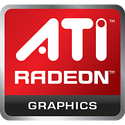
PowerColor Releases First Low-Profile Radeon HD 5750 Graphics Card
TUL Corporation, a leading manufacturer of AMD graphics cards, today announced improved gaming performance for HTPC gamers. The PowerColor HD5750 Low Profile Edition is specifically designed for those with HTPC systems or limited space chassis' who desire the upgraded graphics performance without having to compromise their system size.
The PowerColor HD5750 Low Profile Edition is equipped with a dual fan design and heatsinks that fully cover GPU, memory and MOSFET. The design cools temperatures and dissipates heat for vital components within a limited space. Furthermore, by taking advantage of the low profile design, this unique solution can be used for small form factor and slim systems, maximizing the rig's performance in a limited space.
The PowerColor HD5750 Low Profile Edition is equipped with a dual fan design and heatsinks that fully cover GPU, memory and MOSFET. The design cools temperatures and dissipates heat for vital components within a limited space. Furthermore, by taking advantage of the low profile design, this unique solution can be used for small form factor and slim systems, maximizing the rig's performance in a limited space.




















































